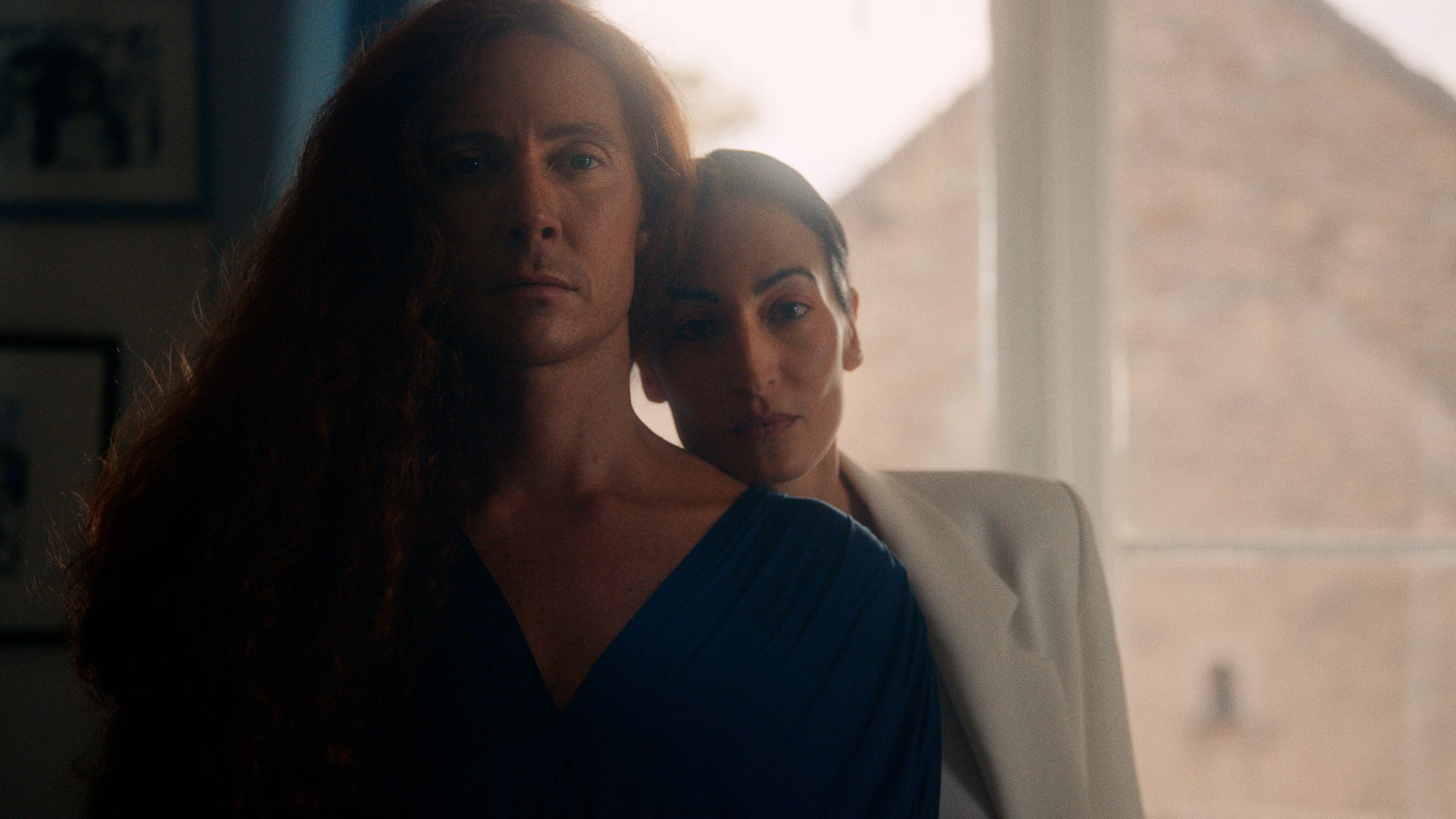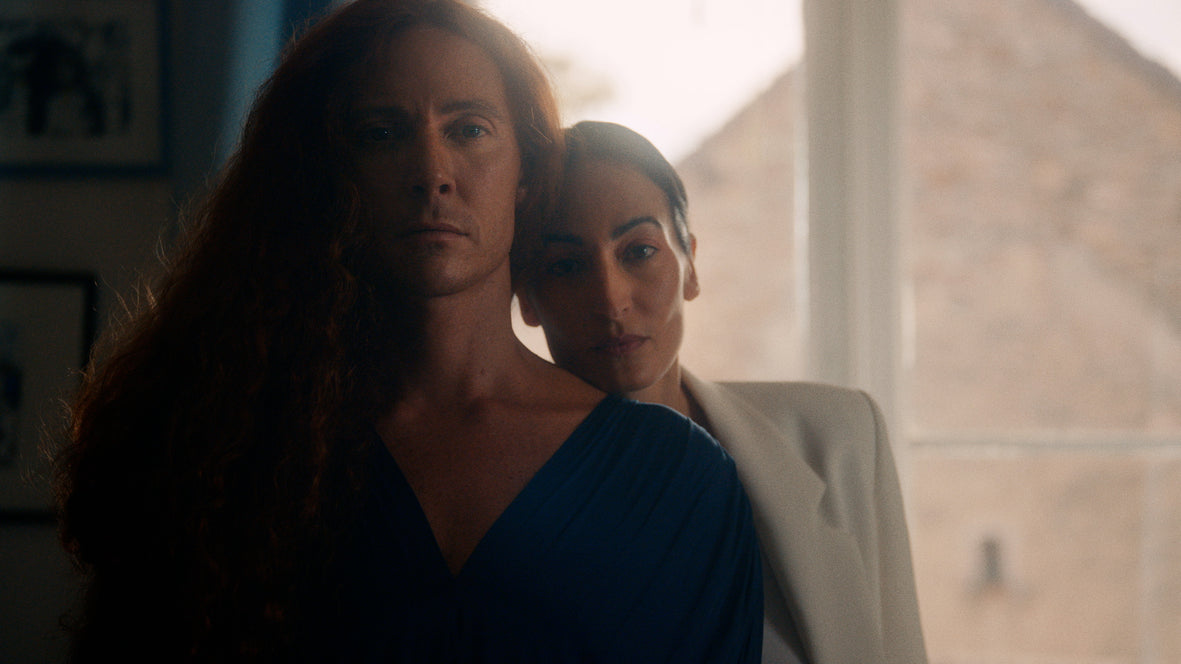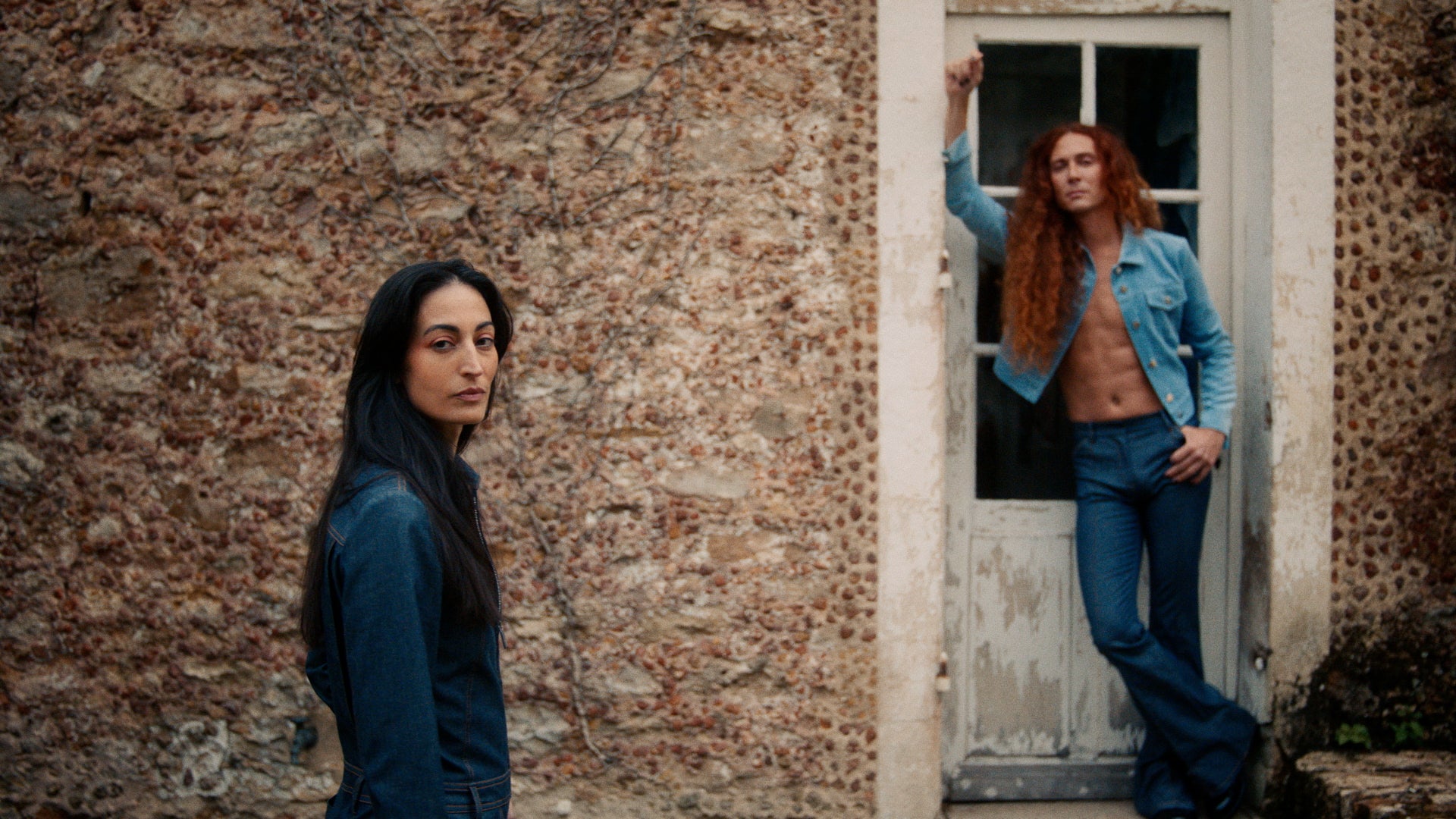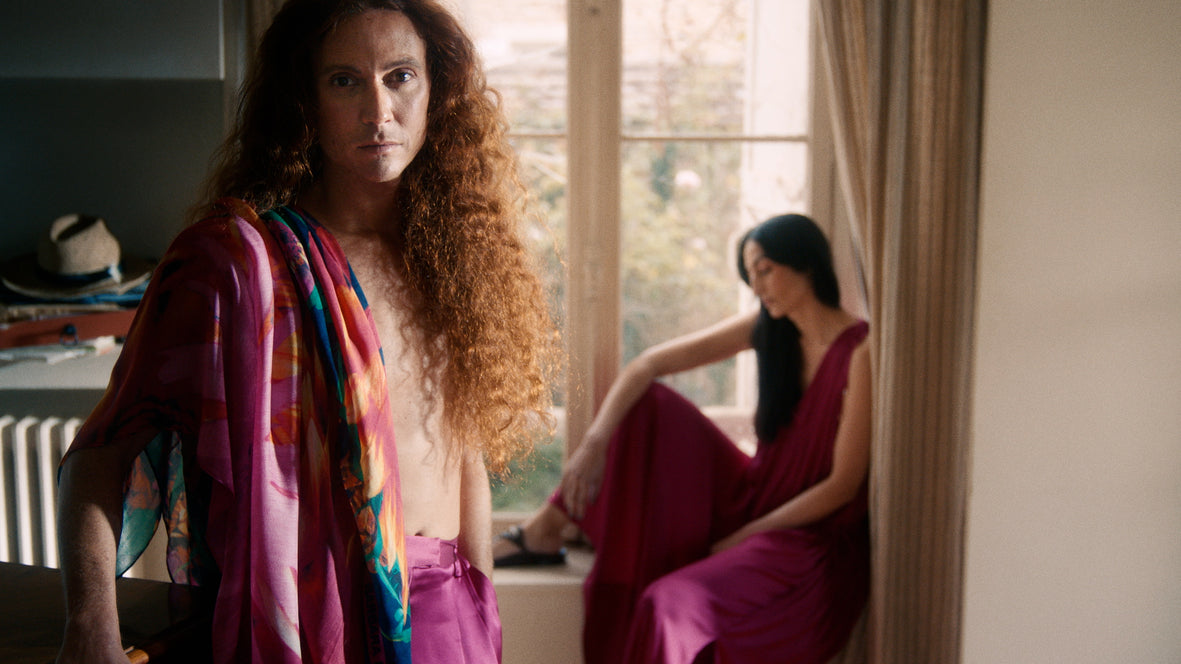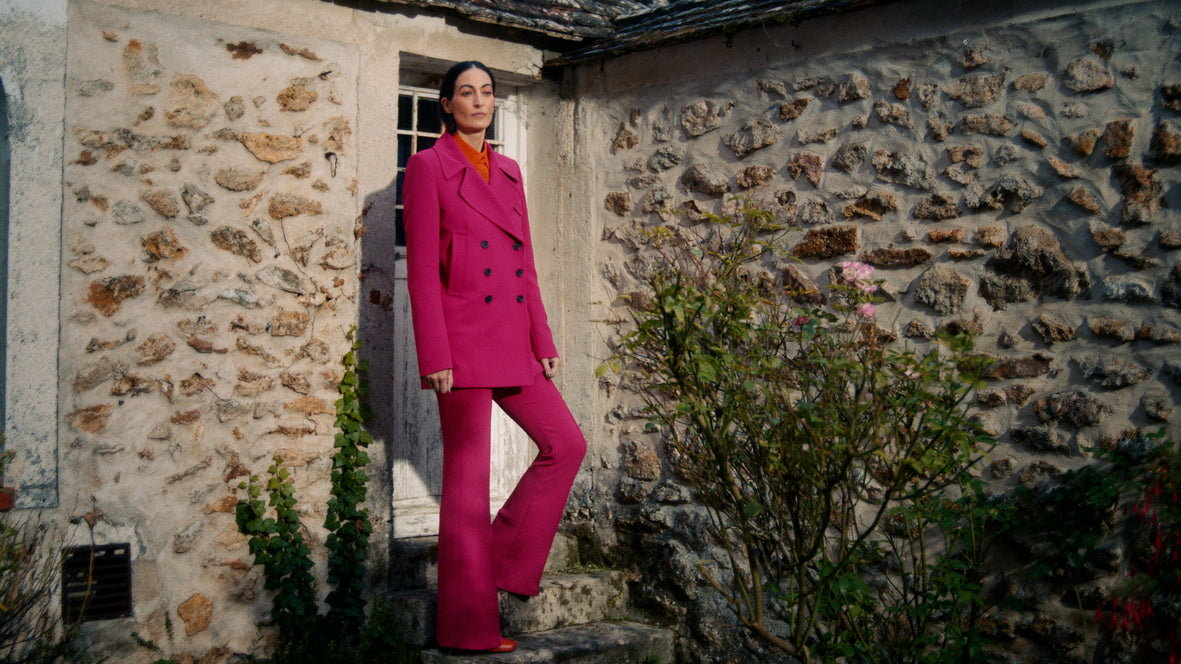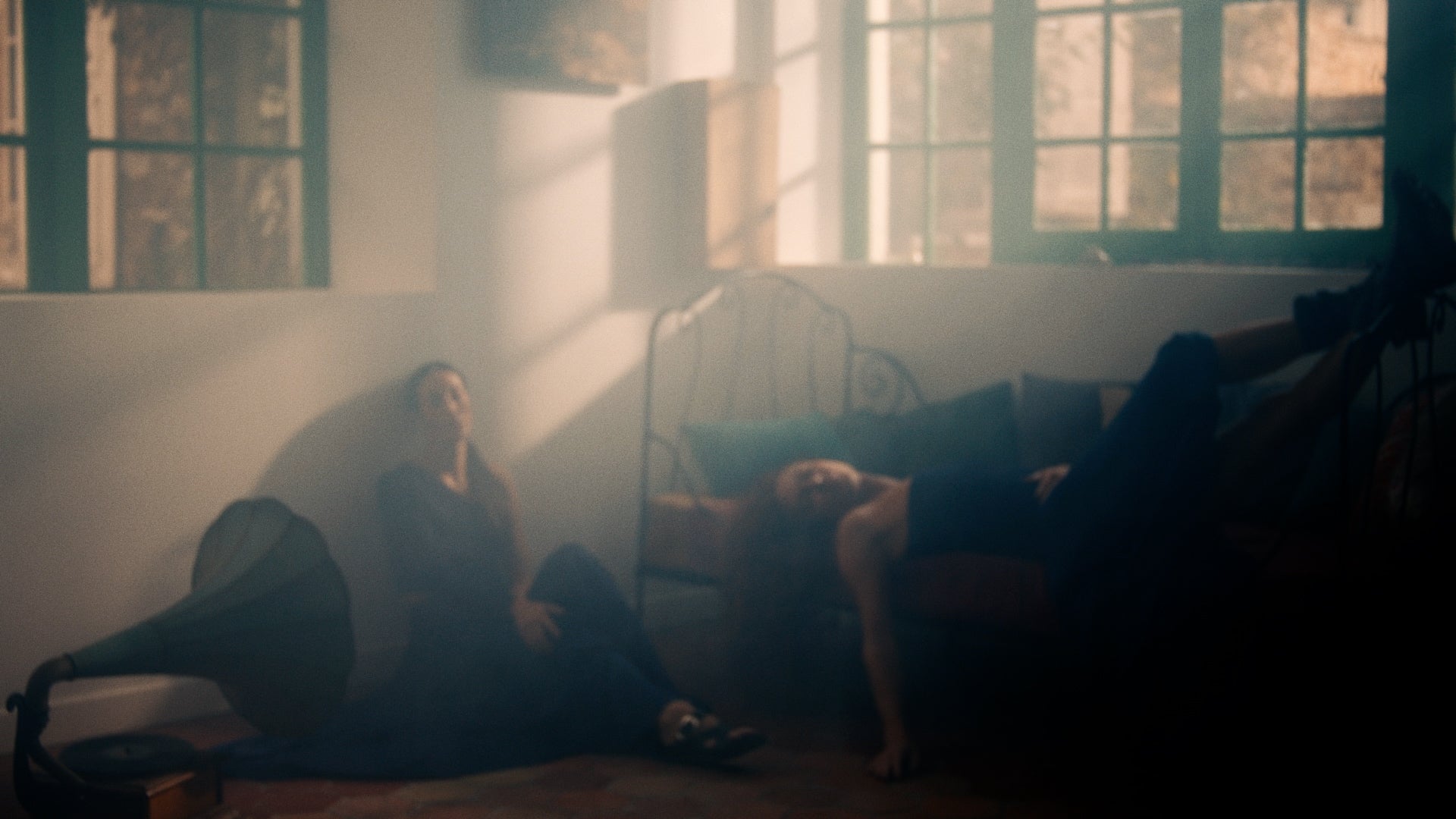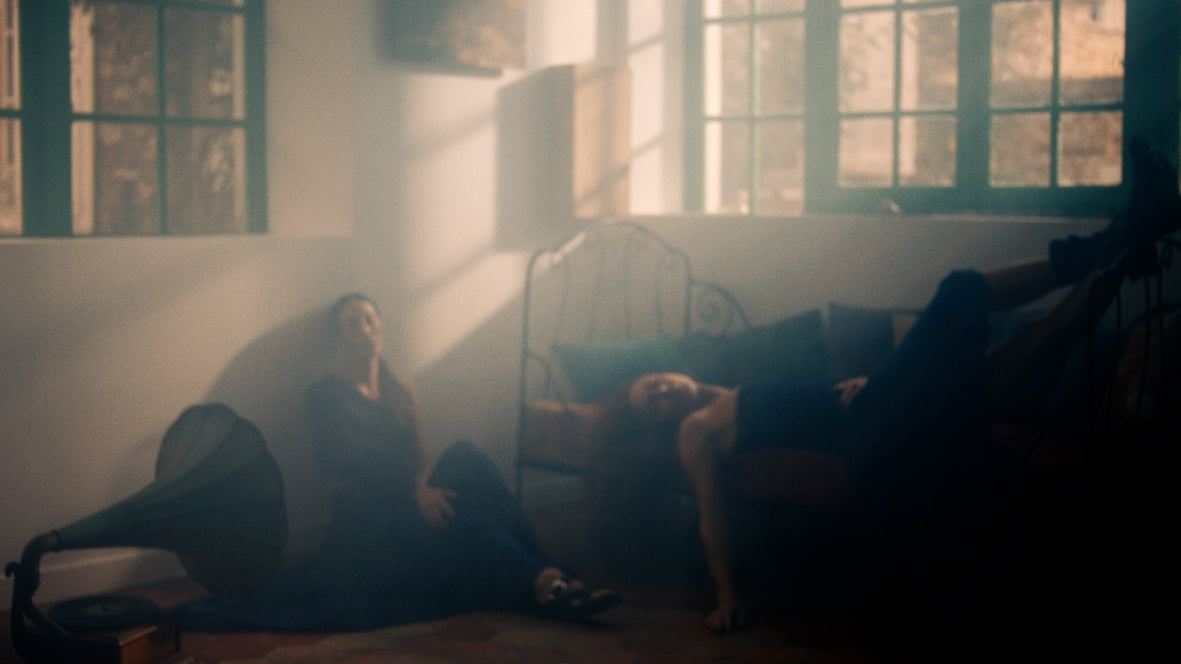A FILM DIRECTED BY KEREN ANN
This season, Barbara Bui entrusted the direction of her spring-summer 2023 film to singer-songwriter Keren Ann. The artist also created the soundtrack, a piano composition, featuring two characters played by actors Laëtitia Eïdo and Romain Brau. To complete the work, Keren Ann penned a poetic and sensitive text read in voice-over, in which she describes her emotional link to textures and materials, nourished by pages by Woolf and Wilde, verses by Dylan and Springsteen. For the musician-director, Barbara Bui's look is eminently cinematographic, so it's only natural that she should set in motion on the screen. A meeting between two creators who share the same artistic language - a rock style with a touch of tenderness.
How did you meet?
Barbara Bui: I've known and loved Keren Ann's music for a very long time. I really wanted to dress her! As soon as we met, we understood each other instantly... We have so many tastes in common. We wanted to do something powerful together.
Keren Ann: I've always followed Barbara's work and I'm very familiar with her brand. What interests me about artists is the sound of their expression. There's no question that Barbara has a stylistic identity all her own. She creates classics, things that inspire us, new dimensions, she remodels them. I quickly became attached to her creative world.
It's amazing, there's a kind of fusion of your respective artistic languages...
Barbara Bui: Absolutely. Our human encounter is also an encounter of words, messages and feelings. The film is an expression of this shared encounter.
Keren Ann: I've always known the brand through its visual identity, which is very rock, but it's not just about image, attitude is at the heart of what Barbara does. Likewise, my rock is not always expressed through rhythm, but can also be seen in the intensity, in the atmosphere, in the approach. I find this in the Barbara Bui world, and particularly in the spring-summer 2023 collection, which is very intense in terms of the materials used, the colors and the shapes. When you put on a Barbara Bui piece, you immediately have an attitude. You recognize it instantly in the line of jackets and trousers, and also dresses. It's everything I love, and I feel very much myself in these designs. With this new collection, Barbara gives even more depth to her eternal look and gives it a new, very spring-like expression. I really wanted to highlight this, both visually and through the narrative of the film. Barbara Bui's rock also exists in the way her clothes are told. The two characters played by Laëtitia Eïdo and Romain Brau convey this attitude and they make us feel it.
Barbara, your spring-summer collection once again lends itself to film...
Barbara Bui: Absolutely. This season, I imagined a pop-rock ballad with a San Francisco spirit. What I find really interesting in a film like this is that it's not about showing fashion for fashion's sake. Laëtitia and Romain's sensitivity is expressed through the clothes; they are living the fashion, it's different. It's another way of expressing fashion, away from the fixed vision, from the heavy clichés we’re used to seeing.
Keren Ann, how do you put Barbara Bui's attitude in motion, how do you film such a unique line?
Keren Ann: Of course, we know the strength of Barbara Bui's silhouettes, but here I wanted to create contrasts. How do you soften such audacity? How do you show the skin? In music, silences and sighs are essential. I think in fashion, the skin plays the same role. In this film, I also wanted to show how Barbara visualizes the skin when she creates a garment. It reminds me of the moment when, at the piano, I lift my hands to let the natural echo continue... I wanted that to be felt in the film.
In this very poetic film, you also explore the idea of mixing genders in an androgynous sharing of locker rooms. How did you stage this idea?
Keren Ann: For my generation, this gender confusion has always existed. I've always seen women wearing tuxedos and men wearing more flowing clothes. Today it's a big deal, but it's always been there, especially in Barbara's fashion. She embodies the idea that anything can be worn as long as you feel good about the lines and the materials. When the garment is told, it doesn't matter what kind of person is wearing it. Laëtitia and Romain both have very strong personalities and I think they instinctively identify with Barbara Bui's pieces. Naturally, the camera was able to follow their gestures, their way of moving as if we were watching them pose in front of a mirror. We wanted to tell the story of these close-up glances, and I think it comes across on-screen that we feel close to them.
Barbara Bui: What’s more, I think it’s time to accept the idea that men can also express gentleness, sensitivity, and expose their fragilities. The expression and the character of a person are independent of the question of the gender.
We feel an almost carnal relationship with materials. In this regard, Keren Ann, you write these beautiful lines: "I wanted to learn about felt and satin, to make my body believe we were in Kunming or Chengdu. I wanted to listen to Sinatra and walk slowly but confidently in a white tuxedo with my mother's Turkish Horse scarf." Or clothing as a place of memories...
Barbara Bui: This surprises us because we’re used to talking about fashion only through questions of appearance and pomp... Here, Keren Ann talks about the intimate relationship we can have with clothes. It's very personal.
Keren Ann: Between the narration, the actors and the images, it's as if the collection came to us. We ask a very simple question: how do we feel in our clothes? Our day and our well-being sometimes depend on them.
Keren Ann, tell us about the soundtrack you composed and the text you wrote to accompany it...
Keren Ann: I chose not to make music with electric guitars because rock is already very present in Barbara Bui's clothes. I wanted to give another interpretation to her work. I wanted something more baroque on the piano to accompany the narrative. The text speaks of our visceral and instinctive relationship with clothes. We all have a link with fashion whether we like it or not, whether we accept it or not. Fashion is sensory: it's all about textures, touch, materials, the body. It's these sensations that I wanted to explore. Barbara's fashion is very bold and powerful, but it’s even stronger in its humility. It is strength in tenderness. And at the same time, it's never simple, her fashion always has the "Wow" factor!
How did you select the looks that are present in the film?
Barbara Bui: We made a first general selection and then we refined our choice in collaboration with the actors, to let them express their personalities. The story, also written by Keren Ann, guided us a lot.
Keren Ann: We wanted everything to be very fluid and for the actors to feel comfortable in the clothes. We also both like to try to find balance in contrasts.
Barbara Bui: We look for subtleties, tensions, shifts; we avoid monoblocks. We also have that in common.
You also filmed this idea of plurality of expression through clothing. This is also what Barbara's fashion offers: emancipation through a multitude of options.
Barbara Bui: We’re constantly evolving, our desires change from one day to the next. It is important not to feel stuck in a style or appearance and to have the freedom to dare. Keren Ann: With Barbara Bui's clothes, you can be Anna Magnani, Sophia Loren or Françoise Hardy... And the same is true for men: you can be James Stuart, Charlie Chaplin... At one point in the film, the two characters are wearing exactly the same top, but each of them is experiencing it differently, even though they're almost in the same position. We embody the clothes, but sometimes they carry us.
Keren Ann, did you write the music for the film before or after you saw the collection?
Keren Ann: Before. I needed to build the film in my head before shooting. I prepare things a lot beforehand because I need everything to be very fluid on the day. When everything is planned, it paradoxically leaves room for intuitions, changes and mistakes. I feel very comfortable changing things. It's a bit like in jazz or rock: everything is very codified and at the same time you’re very free within the given format.
Barbara, music is the lifeblood of your brand. Do you listen to it while you’re creating?
Barbara Bui: If I’m working at home in the evening, yes, and when I need to isolate myself and prevent the stress of the studio from affecting me... My brand’s musical world is something very sensual and sensitive, it's not an intellectual attitude.
In the film, there are also moments of contemplation as if suspended, moments of poetry...
Keren Ann: When we try on an outfit, we all pause in front of the mirror and then adopt attitudes without seeing ourselves, without realizing... I love the notion in quantum physics that states that each element changes its attitude when it’s being observed. Unless we observe a being, we can't know how it will react... We wanted to capture the suspended moments, those moments when the actors forget about the camera. Like stolen moments in a way.
Barbara Bui: These stolen moments are often the most beautiful moments. In photography, I've always preferred uncalculated shots, taken outside of the photoshoot. I dread cold images, not embodied. In the film, we feel as if we’re entering the life of the characters.
Keren Ann: To create a sense of closeness, we devised camera gazes, where the camera moves and the characters gaze directly at us. In the end, it's as if they've become masters of the game and we wonder what could be going on in their heads?
Barbara Bui: I love it when they have this very direct gaze. In life, many people escape into themselves, they don't have this full-frontal view of others or of life. Here, what is filmed says the exact opposite.

